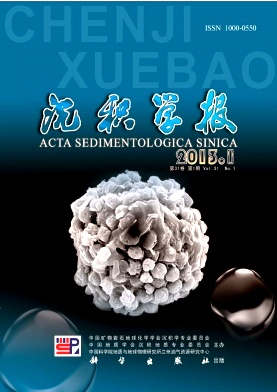Clay Minerals in Surface Sediments of the Taiwan Strait and Their Provenance
- Publish Date: 2013-02-10
-
Key words:
- Taiwan Strait /
- surface sediment /
- clay mineral /
- provenance /
- /
- /
Abstract: The Taiwan Strait connects the East China Sea and the South China Sea, which are two major marginal seas of west Pacific Ocean. This region serves as a canonical area for investigating the terrigenous detrital materials that are transported into the sea, including the provenance and flux, as well as the modelling of the distribution, transport and dispersion in continental shelf areas. Under the combined influence of the southbound Zhemin Coastal Current (ZCC) and northbound Taiwan Warm Current, the sediments in the Taiwan Strait exhibit the characteristics of multiple origins.Clay minerals in surface sediments from the Taiwan Strait and adjacent area were analyzed by XRay Diffraction (XRD) method to constrain the possible provenances including the Yangtze, Fujian and Taiwanese rivers. Clay mineral assemblage in the Min River (one of the largest Fujian rivers) consists dominantly of kaolinite (>40%) with minor amounts of illite and chlorite but without smectite, indicating that clay minerals in Min River drainage basin is originated from upriver granites by weathering under warm and humid conditions. Yangtzedominated clays have relatively high illite (61%~66%), with small amounts of chlorite (16%~17%) and kaolinite (10%~13%), low smectite (6%~9%) and poor illite crystallinity. Taiwandominated clays (Zhoshui River), in contrast, have the highest illite contents (>70%), and no smectite. The clay mineral assemblages from both sides of the Taiwan Strait are different, because of the source rocks and weathering condition factors. In the Taiwan Strait, kaolinite contents of the sediments decrease gradually from west to east, indicating that they are mostly originated from Fujian rivers. In the east region of the 50 m isobath in the Taiwan Strait, the clay mineral assemblage is dominated by illite and chorite with scarce smectite and kaolinite (both generally<5%), different from those of the Yangtze and Fujian rivers. Moreover, both chemistry index and crystallinity of illite are lower than those of the Yangtze and Fujian rivers, but similar to those of the Taiwanese rivers. Our data suggest that most of illite and chlorite in the northern Taiwan Strait were provided by Taiwanese rivers through the Taiwan Warm Current. However, clay minerals in offshore areas of Fujian Province were mainly provided by Fujian rivers, and locally possible mixed by the Yangtze river, such as the neighbor oceanic area of Pingtan island.
| Citation: | Clay Minerals in Surface Sediments of the Taiwan Strait and Their Provenance[J]. Acta Sedimentologica Sinica, 2013, 31(1): 120-129. |






 DownLoad:
DownLoad: